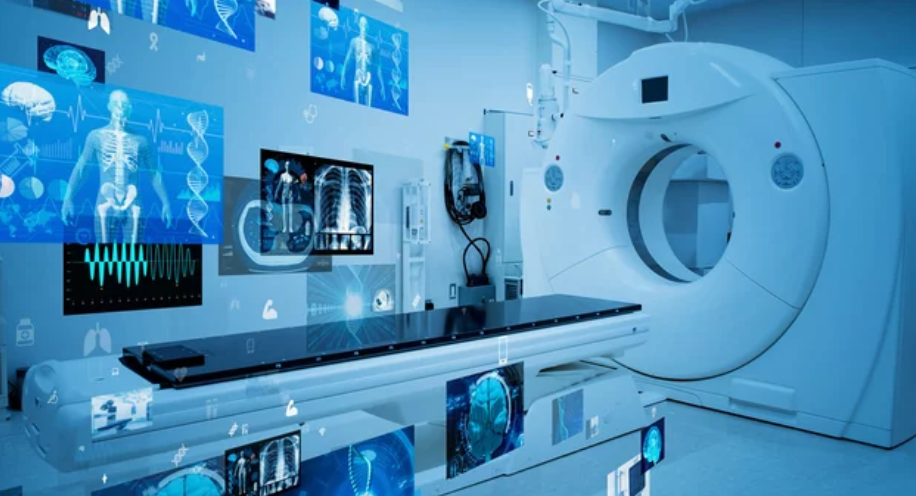Magnetic Resonance Imaging (MRI) has long been a cornerstone of modern diagnostics, offering detailed insights into the human body without the risks associated with radiation. Traditionally, however, MRI scanners have been large, immovable, and confined to hospital radiology departments—making them inaccessible in many urgent or remote situations. The emergence of portable MRI machines is rewriting this narrative, introducing a revolutionary shift in emergency medicine, critical care, and point-of-care diagnostics.
This innovation not only enhances accessibility but also accelerates treatment decisions, potentially saving countless lives where every second counts. Let’s explore how portable MRI systems are transforming emergency care, their technological advancements, and what the future holds for this groundbreaking medical technology.
Revolutionizing Diagnostic Imaging at the Point of Care
The concept of portable MRI was once deemed impossible due to the sheer size, power, and cooling requirements of traditional MRI systems. Today, with advancements in low-field magnet technology and AI-driven image reconstruction, portable MRI machines can now deliver high-quality images using significantly less power and infrastructure.
These compact scanners can be transported directly to the patient’s bedside, whether in an intensive care unit (ICU), emergency department, or even ambulances and field hospitals. This means that critically ill or immobile patients—who might otherwise face risks during transport—can now be scanned safely on-site.
How Portable MRI Machines Work
Unlike conventional MRI systems that rely on strong superconducting magnets cooled by liquid helium, portable MRI scanners often use low-field permanent magnets. These require little to no cooling, drastically reducing operational costs and complexity.
Furthermore, the integration of artificial intelligence enables real-time image correction and enhancement, compensating for lower magnetic field strength. Combined with wireless connectivity, the data can be instantly uploaded to hospital networks or cloud-based diagnostic systems for immediate interpretation by radiologists.
Key technological components include:
- Low-field magnet systems that reduce energy consumption and size.
- AI-based image reconstruction for sharper, diagnostic-quality images.
- Portable power units for use in off-grid or emergency environments.
- Cloud-based connectivity for seamless image sharing and consultation.
Life-Saving Applications in Emergency and Critical Care
1. Stroke and Neurological Emergencies
One of the most significant applications of portable MRI lies in neurology, particularly in diagnosing acute strokes. In many emergency rooms, timely access to MRI can determine whether a patient qualifies for clot-busting treatment. Portable MRI machines enable on-the-spot brain imaging, reducing diagnostic delays and improving outcomes.
2. Head Trauma and Intracranial Injuries
In cases of head injuries or traumatic brain injury (TBI), immediate imaging is crucial. Portable MRI scanners can be deployed right in the emergency department or ICU, offering rapid detection of bleeding, swelling, or tissue damage without moving the patient—an invaluable advantage for those in critical condition.
3. Pediatric and Neonatal Care
Transporting newborns or young children for imaging poses high risks. Portable MRI units, compact enough to fit within neonatal ICUs, provide a safer, quieter, and radiation-free alternative for diagnosing brain injuries, congenital abnormalities, or developmental issues.
4. Rural and Military Medicine
In rural hospitals, disaster zones, or battlefields, traditional MRI access is often impossible. Portable MRI systems bridge this gap by offering field-deployable diagnostic imaging that supports remote telemedicine and military field operations, enabling life-saving decisions in real time.
Benefits of Portable MRI Technology
The rise of portable MRI machines offers a wide array of clinical and operational benefits:
Improved Accessibility and Equity
Portable MRI brings advanced imaging to locations that previously lacked access, from small community hospitals to developing regions—making healthcare more equitable and inclusive.
Reduced Patient Risk
Eliminating the need to transport unstable or critically ill patients reduces complications, especially for those on ventilators, IV lines, or life-support systems.
Faster Diagnosis and Treatment
In emergencies such as stroke or trauma, minutes matter. Portable MRI provides near-instant imaging access, expediting critical treatment decisions.
Lower Operational Costs
Compact MRI systems require less maintenance, power, and infrastructure, lowering the total cost of ownership and making imaging more sustainable for smaller healthcare facilities.
Integration with AI and Cloud Systems
The fusion of AI algorithms and cloud-based data sharing allows for automated interpretation, remote consultation, and improved workflow efficiency—ushering in a new era of connected healthcare.
Challenges and Limitations
Despite its promise, portable MRI technology is still evolving. Current limitations include:
- Lower image resolution compared to high-field (1.5T or 3T) MRI systems.
- Restricted imaging scope, often focused on the brain rather than full-body scans.
- Regulatory and logistical hurdles, including the need for safety certifications and operator training.
However, ongoing research and development are quickly closing these gaps. As magnet design, AI image enhancement, and software processing continue to advance, portable MRI is expected to match or even surpass conventional systems in diagnostic accuracy.
Future Prospects: The Next Frontier in Mobile Imaging
The future of portable MRI is incredibly promising. Emerging innovations point toward wireless, battery-powered MRI units that can fit into compact vehicles or be carried into remote locations. Combined with 5G connectivity and cloud-based AI diagnostics, healthcare providers will soon be able to perform full diagnostic imaging virtually anywhere.
Academic institutions and tech companies are already exploring wearable MRI prototypes for real-time brain monitoring, and AI-assisted triage tools that automatically interpret images and prioritize urgent cases.
As the technology matures, portable MRI will likely become an essential fixture not only in hospitals but also in ambulances, clinics, sports facilities, and even homes—expanding the reach of medical imaging like never before.
Conclusion: Redefining Emergency Care Through Mobility
Portable MRI machines represent a monumental leap forward in the democratization of medical imaging. By combining compact design, AI innovation, and accessibility, these devices are transforming how and where patients are diagnosed—making emergency care faster, safer, and more efficient.
From stroke diagnosis to battlefield triage, the ability to perform MRI scans anywhere could soon redefine the standard of care in emergencies. As research continues and adoption grows, portable MRI is poised to become one of the most impactful medical technologies of the 21st century—bringing life-saving diagnostics to every corner of the world.
Also Read :
